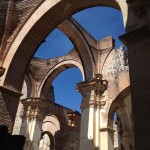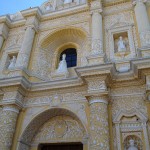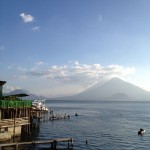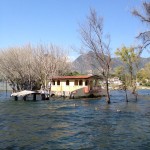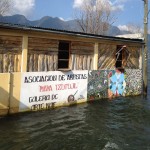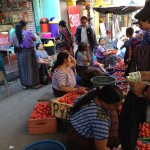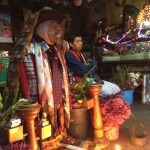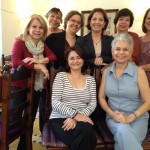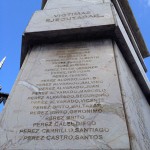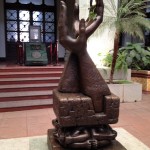Originally published in the Summer 2014 MLA Newsletter
In recent years, the MLA has been exploring a new project to expand career opportunities for PhD holders, one we expect to refine and develop in the years ahead. Before I tell you more about the project, I want to acknowledge several potential objections to it. Some MLA members have told me that discussions of careers beyond the classroom are the wrong kind of conversation for us to have. This group of members believes that the MLA should concentrate on fighting for tenure-track positions on campus in language and literature fields—even though staffing decisions are particular to each institution. Some argue that the employment conditions of those already working as adjuncts deserve more of our attention. Still others note that, to the extent graduate education needs reforming, it should, if anything, focus more on preparing PhD candidates for the research expectations that they will face should they win one of the coveted tenure-track jobs.
I can see why members might feel this way, yet this project doesn’t need to be an either-or effort. The association has worked extensively on issues related to academic careers (full- and part-time), and we won’t abandon our advocacy and research role in these matters. We will continue to collect and analyze data, to argue for appropriate working conditions, and to create models for departments and institutions to follow. We will speak out and act up by naming harmful practices and calling for solutions. We will increase our support for graduate students, adjuncts, and unemployed members. And we will also provide resources so that PhD students can expand their career horizons.
When we began this collaborative project with the American Historical Association (AHA), our aim was to collect and disseminate information about long-term employment outcomes for humanists who hold the PhD and to develop structures that individuals and departments can use going forward as far as careers are concerned. Most people assume that the relative paucity of tenure-track jobs translates into long-term unemployment or underemployment for PhDs who don’t land a tenure-track position. Yet PhDs who desire full-time jobs can indeed find them—though not necessarily as professors. Data show that PhDs have had diverse employment outcomes for some time now. David Laurence, director of research at the MLA, has studied this issue. He observes that “people who enter the long and arduous path of doctoral study in the humanities do so having a postsecondary faculty career as their primary goal, and people who pursue graduate education in the humanities actually find careers in a far broader range of professional positions than postsecondary teaching, even if their first job after graduate school is a postsecondary faculty position on or off the tenure track.” The question, then, is not whether PhDs should pursue careers other than teaching, but rather how we as a field will respond to the evidence that they do.
From what PhD students report informally, the field has typically responded in ways that prove less than constructive. Students say that when they express their inclinations to explore careers other than tenure-track assistant professorships, they often receive little support from their graduate advisers, who perhaps don’t know how to help or disapprove of the choice. Advisers may also feel compelled to adhere to the existing rewards structure for job placement: Research I university placements count big, liberal arts colleges count medium, and nonacademic jobs don’t count at all. The first necessary change is attitudinal. Andrew Green, associate director at the Career Center at the University of California, Berkeley, notes that PhDs who “take jobs that they find very rewarding in business, government, or a non-profit—but are not faculty positions—typically become non-entities within their graduate programs” (qtd. in Segran). Put simply: graduate programs must recognize that a significant percentage of PhDs can and will get jobs that are not like those of their mentors. As a profession, we must support students who pursue these careers, which should be viewed not as “alternative” but as valid options in their own right.
What can scholarly associations do to make it possible for PhD candidates to broaden their career horizons? With support from the Andrew W. Mellon Foundation, the AHA has embarked on a project that holds great promise for history PhDs (“AHA”), and the MLA is planning its next steps. A major report to be released soon from the Task Force on Doctoral Study in Modern Language and Literature, chaired by Russell Berman, past president of the MLA, will map out the essential changes that departments can undertake as they seek to meet the needs of PhD students today and to engage in better tracking of graduates’ careers. The recommendations in this report lay the foundation for a more expansive view of what we train PhD candidates to do and what they can do with that training.
The MLA has begun offering panels and workshops at the annual convention to showcase a variety of careers, and the ADE and ADFL Summer Seminars for department chairs have also taken action on the topic. Under the title Careers for Humanists, the Vancouver convention will feature a suite of activities, including a job-search workshop for those interested in pursuing careers beyond the classroom or the campus. Attendees at the session I organized for the 2013 convention, “Leaders on the Right Track in the Academy,” told me that they felt encouraged that the distinguished PhDs on the panel had found successful jobs related to the academy, jobs that involve high-level decision making, a degree of autonomy, responsibility for overseeing major projects and supervising teams, and so on. These career paths don’t come into view in most graduate programs.
What’s next? The possibilities we are exploring include establishing campus-based projects, creating regional networks, using MLA Commons for career development, and perhaps even holding a job fair. Graduate students will lead many of the projects and develop transportable leadership skills in the process. Our data collection and analysis will also evolve as we learn more about the employment choices of PhDs in our fields. For any of our efforts to be successful, however, three things have to happen. First, graduate departments need to take an expanded approach to job preparation and career tracking. Second, graduate students and faculty members must recognize that, while the assistant professorship may be the primary career goal, a multitude of opportunities are out there, and people can find immense satisfaction when they elect to pursue them. Third, employers need to see PhDs in the humanities as potential hires. The MLA is one such employer, and the dozen plus staff members who hold the PhD can attest to the applicability of the degree to the work of the association. I look forward to hearing your thoughts on the Expanding Career Horizons project.
Works Cited
“AHA Receives Grants to Expand Career Tracks for History PhDs.” AHA Today. Amer. Historical Assn., 20 Mar. 2014. Web. 2 Apr. 2014.
Laurence, David. “Our PhD Employment Problem, Part 1.” MLA Commons. MLA, 26 Feb. 2014. Web. 2 Apr. 2014.
Segran, Elizabeth. “What Can You Do with a Humanities Ph.D., Anyway?” The Atlantic.com. Atlantic Monthly Group, 31 Mar. 2014. Web. 2 Apr. 2014.

